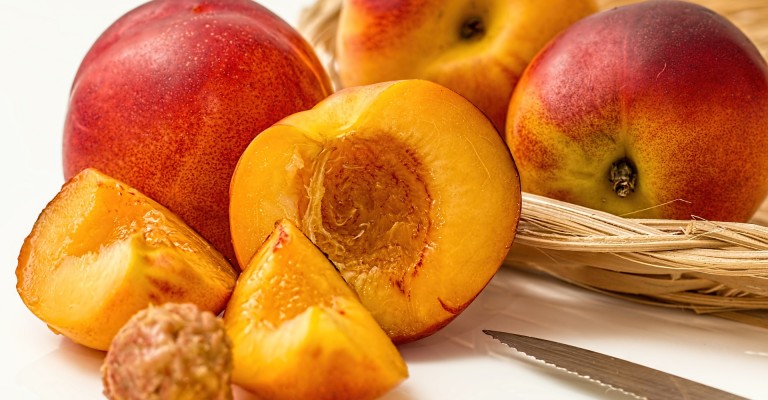Nectarines are from a fruit bearing tree of the Prunus family, classified as a drupe or stone fruit, related to other such fruit as peaches, plums, apricots, cherries and even almonds. Of the same species as a peach, they differ in having a smooth, fuzz free skin, slightly firmer flesh and often smaller. It's often thought nectarines originated from cross pollinating a peach and a plum, but it seems that genetic studies have proved this incorrect.
Likely to have originated from central and southern Asia, where there is significant cultural representation of the blossoms, the fertility of fruit and even the wood from trees was considered good for protection. Today, China is the largest producer of peaches and nectarines, although orchards can be found globally in dry temperate to sub tropical regions. Production is very seasonal with the first fruit harvestable in late spring, then throughout summer. All stone fruit have a sweet, juicy taste and are thoroughly enjoyed during the summer months.
Typically nectarines need a
How to prepare
A nectarine can be eaten as a whole fruit, or cut into segments to add to salads or desserts. There is a large stone (seed) in the middle of the fruit which is removed and discarded.
Buyer's and storage guide
Look for nectarine fruit that are well coloured, firm, glossy and unblemished. Skin colour can vary with different varieties so is worth trying out different types.
Keep nectarines in a cool, dry place, that way they will remain fresh up to three days. You can keep them in the refrigerator for about a week, but keep in mind that they're best eaten at room temperature. Fruit will ripen quickly, so if a little hard at the supermarket, it'll only take 3-4 days on the bench to mature.
Serving
- Enjoy whole, just as you would an apple
- Create a salad added to feta cheese and strawberries
- A welcome addition to any fruit salad
- Often used as a topping for frangipane tarts, flans and all manner of pastries
- Can be slowly cooked in a saucepan to create jams, sauces and compotes
